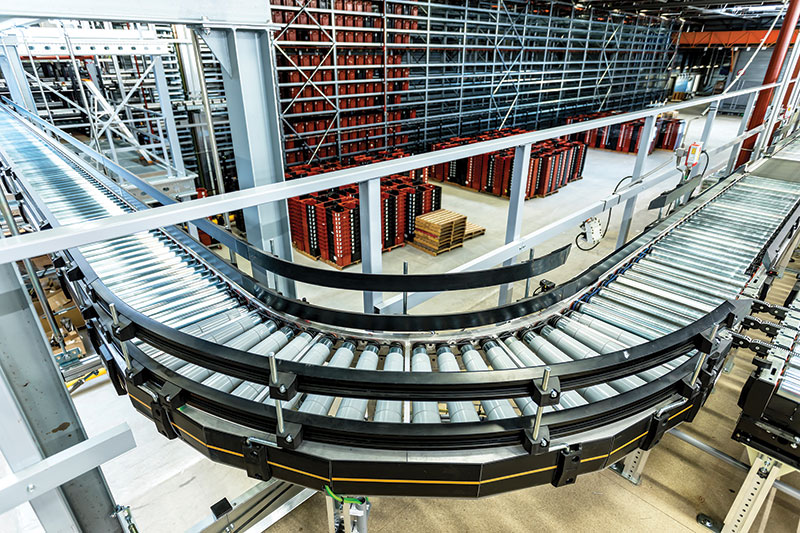
By MMH Staff · November 30, 2020 At a time when many retailers are struggling with omni-channel logistics, store chain Blokker drastically reduced logistics costs by integrating its e-commerce and retail operations into one DC. “Our logistics can now grow into the driver of the commercial strategy. Most retailers emphasize the differences between the two operations,” says Roel Megens, DC manager for Blokker. “However, we have looked at the similarities, which prove to be [more] than is often thought.” The focus on the similarities between the two operations has led to a logistics concept that no longer distinguishes between picking Internet orders and store orders. The shuttle system plays a key role in this process. Full bins are stored in the system until the relevant orders are completed. The shuttles then ensure the bins are unloaded at the right time—and in the right order—for each store location. Afterward, the warehouse management system (WMS) stops all orders with one order line in a separate batch, so the bins with these single-line orders are transported directly to a packaging machine, which packages the items automatically in a customized box. For slower-moving articles, a pick-to-cart system is used. “We call these the close-to-fill locations,” Megens says. Order pickers make their rounds with intelligent pick carts that have space for eight bins. The intelligence is visible through the pick-to-light displays on each cart. As soon as the order picker scans the bar code of the pick location, these displays indicate how many pieces must be placed in each bin. E-commerce orders with two or more order lines go to the setup with “pigeonholes,” where they are consolidated. When an employee scans an article, a light indicates which hole to put the article in. When an order is complete, the light on the other side of the hole lights up—a sign that an order can be packaged and shipped. “This step enables us to cut orders and bundle the partial orders per zone, so order pickers do not have to walk as far. The time saving that this yields far outweighs the extra time we need for order consolidation,” Megens adds. All control of the order picking carts, conveyors, shuttles, box stackers and put-to-light is handled by warehouse execution system (WES) software. Now that the system is operational, the logistics costs have been minimized. But that is not the only advantage, explains Megens. “Logistics is no longer an obstacle to the implementation of the commercial strategy. In fact, logistics can be a driver for the commercial strategy in the future,” he continues. “We can now support more logistics concepts, which provides additional sales arguments. Our DC has become a sales machine.”
这家伙很懒,还没有设置简介